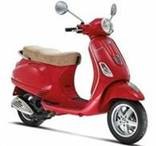With decision n. 482 of 2019 the Italian Court of Torino decided on whether the beauty and the history of a car may be reasons to deserve copyright protection. The case regards the company Tecnomodel S.r.l. producer of miniature cars, including the models in scale 1/18 and 1/43 of the cars Alfa Romeo Giulietta SZ and Lancia D24, shown below.
Alfa Romeo Giulietta SZ
Lancia D24
FCA Italy S.p.A. and FCA Group Marketing S.p.A. (hereinafter together FCA), owner of Alfa Romeo and Lancia trademarks, requested Tecnomodel to stop producing and selling the miniature of cars Alfa Romeo Giulietta and Lancia D24 as they were infringing FCA’s trademark rights.
Tecnomodel filed an action against FCA requesting the Court of Torino to assess that the scale model produced by Tecnomodel did not infringe FCA’s trademark rights. The parties pacifically set aside the issue regarding trademark infringement. FCA in fact did not dispute that the use of Lancia and Alfa Romeo trademarks on miniature cars was for descriptive purpose necessary to indicate which type of car the miniature was representing. Besides, the CJEU already held in the Opel Case (C-48/05) that the use of the trademark of a car on a scale model, in a way that consumer clearly perceives that the producer of the car and the one of the scale model are different, does not constitute trademark infringement.
However, FCA counterclaimed invoking copyright protection of Alfa Romeo Giulietta and Lancia D24 for being work of industrial design with original character and artistic value, relying on various facts, including that the cars became famous during the 50s for several races won, appeared on several specialized and fashion journals and during retro expositions. Moreover, they have been manufactured in a limited production, and nowadays there are only few original pieces in the world, with an inestimable price.
The Court refused to recognize any copyright for those two cars. It held that a work of industrial design intended for mass production may be protected as a work of art if, beyond the original character, it has an artistic value, which can be deduced by objective indicators such as recognition from cultural institutions, expositions in museum, publications on specialized journal, awards, the creation by a famous artist, a market value much higher than the price given by the functionality of the work etc.. Moreover, the artistic value, even though this cannot be exhaustively defined, together with the original character, must give a work of industrial design an added value compared to its simple function.
In the case at hand, the Court held that FCA did not present enough evidence to satisfy these criteria. On the one hand, the “creators” of Alfa Romeo Giulietta and Lancia D24 were esteemed car designers but not real artists. On the other, FCA did not provide evidence on the recognition of aesthetic and artistic characteristics, and the other objective evidence from which the artistic value can be deduced, as evidence related only to the automotive sector was incapable to prove the two vehicles had acquired creative, historic and commercial value in the artistic environment.
Interesting enough, the same Court of Turin, while dealing with the alleged “artistic” value of the scooter VESPA, took an entirely different position (see in here).
In that case, where the defendant was trying to import in Italy scooters resembling a Vespa, the Court held that the Vespa deserved both 3D trademark and copyright protection, and the decision was upheld on appeal in case 1628/2017.
Basically, the Appeal Court held that the Vespa’ shape is not a shape that gives a substantial value to the product (and it is thus a valid shape mark), because consumers choose Vespa not only for its undeniable aesthetic and artistic qualities, but also for its functionality and reliability. Moreover, the fact that the judge of first instance granted copyright protection to the Vespa, does not automatically mean that the shape of Vespa is not registrable as a trademark.
With regard to copyright protection, the Appeal Court confirmed that the evidence provided by Piaggio proved the creative and artistic value of the Vespa so that such copyright protection would extend also to later Piaggio models deriving from it, just like copyright covers also the derivative works.
So, a Vespa is a work of art, but Lancia and Giulietta aren’t, and the difference is in the amount of “external” evidence provided to prove the “artistic“ value. Now, we are not art critics, but there is something which does not add up. Is art the result of a market survey? Is the difference really a matter of the amount of evidence proffered to prove “artistic” value or is there something else? Perhaps and hopefully the CJEU will provide some guidance in the upcoming Cofemel decision (case C-683/17), because some more uniformity seems needed. Finally, a perfidious question… but if instead of miniature cars, Tecnomodel had been selling real “replica” cars, would the Turin Court have decided differently?
This post was first published on the Kluwer Trademark Blog.
________________________
To make sure you do not miss out on regular updates from the Kluwer Copyright Blog, please subscribe here.





